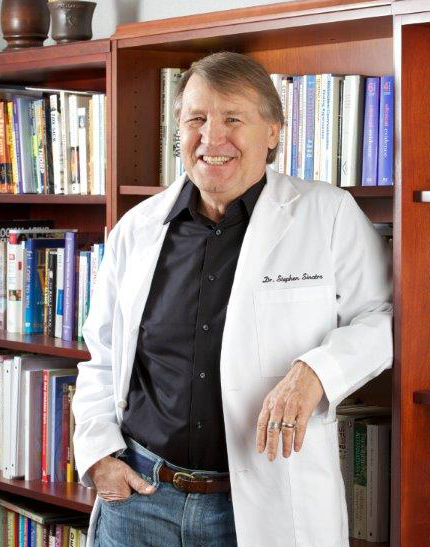By Stephen T. Sinatra, M.D., F.A.C.C., F.A.C.N., C.N.S., C.B.T.
In her article about Dr. Abraham Verghese, author and senior associate chairman for the theory and practice of medicine at Stanford University, Denise Grady casts light on a modern medical education trend that threatens loss of “personal touch” in today’s doctor-patient relationships. In an era where lab tests and M.R.I., CT and ultrasound machines are the ultimate diagnosticians, old-fashioned physical exams which include careful touching, looking and listening are at risk of extinction. While some doctors consider physical exams obsolete in light of modern technology, others like Dr. Verghese, believe they are a lost art in need of revival.
Verghese, who trained in Ethiopia and India before becoming a resident physician in the U.S., says that medical students in the United States do not spend enough time learning human anatomy; many don’t know how to palpate a spleen or even test patient reflexes. With first-year medical residents (interns) in mind, Dr. Verghese designed the Stanford 25, a series of workshops teaching 25 essential patient examination techniques, which include testing the pupils’ responses to light, feeling the thyroid gland, and reading the hand for nerve disorders and systemic disease. The Stanford 25 are not the only, or even the most important, exam techniques, as Verghese emphasizes, but a good place for physicians to start. Learning how to give a proper bedside exam not only helps sharpen one’s ability to detect reliable signs of the functional consequences of illness, but it helps cultivate trust, which underlies a good doctor-patient relationship, as Dr. Verghese suggests.
My Take on This
Dr. Verghese’s classical teachings in physical diagnosis are what help make a good physician. Like TV’s Dr. House, who has a good eye (albeit terrible bedside manner) for what’s ailing patients, doctors who learn foundational hands-on techniques such as looking at the pupil to ascertain vital information about the autonomic nervous system, testing reflexes, looking at tongues, and listening to hearts and lungs, really learn the art of medicine.
Today’s doctors are predominantly focused on lab tests. They treat numbers instead of patients. A classic example is treating high cholesterol as if it is heart disease. In the absence of cardiovascular disease symptoms, pushing patients to undergo angiograms (heart catheterizations) just because their cholesterol is 300 or higher is not the practice of smart medicine. Oftentimes angiograms, which employ x-ray technology, will reveal normal arteries in patients with high cholesterol. By performing tests like the ones Dr. Verghese advocates, doctors would eliminate the need for unnecessary testing that may do more harm than good.
CT (“Computed Tomography”) scanning the abdomen, for example, exposes patients to much larger doses of radiation than conventional X-rays (as much as that received by Hiroshima survivors). Such exposure can contribute to the development of cancer, especially if patients are exposed to other toxins. People should generally avoid body scans unless there is enormous indication that something is wrong.
Both classic diagnostic tools like the Stanford 25 and energy medicine techniques like bioenergetic psychotherapy help doctors build relationships with patients. Examining lab results before, or instead of, physically examining patients can deprive patients, especially those who really need it, of basic, human, healing contact.
By (respectfully) touching patients, doctors can transfer positive, healing energy (“chi”) to them.Some patients are starved for contact and really need that healing energy. Reiki practitioners, massage therapists, and chiropractors all use touch, and technique, to help heal patients and doctors seem to be losing touch with this aspect of medicine in today’s technological age.
My bioenergetic psychotherapy training also gave me adjunctive diagnostic tools with which to read patients’ bodies for signs of illness, including examining quality of the skin and handshake, reading the eyes, noticing muscular tension, and tracking energy. Bioenergetics is like cutting down a tree and determining it’s age from the rings. A good bioenergetic therapist can look at the energy of body – the breathing pattern, the sparkle in the eyes look for sadness, look at the shoulders, the jaw….and see what’s going on.
- Grady, Denise. “Physician Revives Dying Art: the Physical.” New York Times, Oct. 11, 2010.
- The Stanford 25 Web Site.
- Brenner DJ, Hall EJ. “Computerized Tomography: An Increasing Source of Radiation Exposure.” N Engl J Med 2007; 357:2277-2284.
- Sinatra, Stephen. Reverse Heart Disease Now. New Jersey: John Wiley & Sons, 2007.
- Sinatra, Stephen. Heartbreak and Heart Disease. Illinois; Keats, 1999.
© 2012 HeartMD Institute. All rights reserved.










